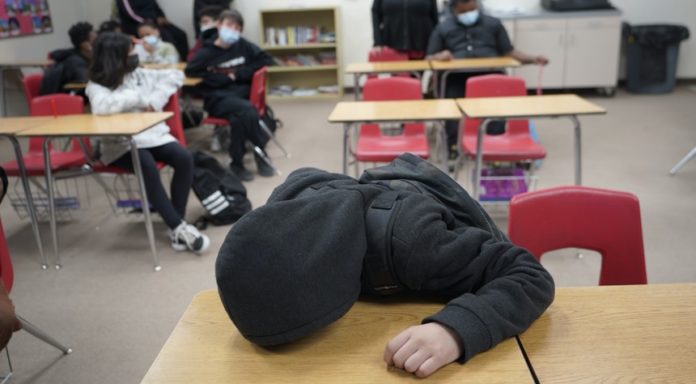Teachers are now more open about the ways they indoctrinate students to a progressive ideology regarding gender identity. Despite the widespread backlash, educators insist on inducing children to accept their views on transgenderism.
Laura Meckler, an author for The Washington Post interviewed teachers to learn how they teach gender in their classrooms. These teachers’ responses were very insightful and show why parents need to be more vocal against this brazen attempt to mold children’s minds.
The author explained that there are some lessons about gender identity that can be directly applied: “Who can define what transgender means?” Other instances can be subtler: “Remember, family, can come in all shapes or sizes!”
Teachers can condition children by using gender-neutral terms to help them see different genders as the same. Instead of greeting their students with “Good Morning Scholars,” a teacher might say, “Good Morning, Scholars!”
The article’s author explains that there are now “resources for teaching about gender identity and lesson plans for teachers” and that some states require that all curriculums contain LGBTQ topics.
Meckler says that despite efforts to make this type of teaching more widespread, “classes which address gender identity remain the exception in American schools.” If this is true, however, it will not stay that way for long – unless there is resistance to the push to include these teachings in every classroom.
Teachers can also promote transgender ideologies in elementary schools by teaching students that there are no “boy colors” or “girl colors”. “I was born this way!”
“Pink Blue and Purple”, a lesson plan for first-grade sixth-graders, teaches them that gender does not have to be fixed.
Teachers are told to say it again: “You might feel like a boy, even though you have body parts that others might call ‘girl’ parts.” You might feel like you’re a girl, even though you have body parts some people say are ‘boys’. You might not feel as if you are a boy or girl, but you are a bit of both. You are perfectly normal, no matter what you feel!
These lessons are aimed at children as young as 4 years old. A Massachusetts teacher explains the role of pronouns in gender relations in a kindergarten classroom. Meckler wrote that he introduced the terms transgender, and genderqueer, but didn’t define them fully because it was too complicated for kindergarteners.
He also doesn’t classify body parts by gender. He stated, “[w]e don’t say that a penis belongs to a man.” Instead, it belongs to someone. He tells his children that even though a doctor may say that a baby was born a boy, he may not be one. “A boy born may not feel like a boy.”
Other teachers, however, are more cautious in their approach. Sacramento’s teacher doesn’t bring up gender identity with her sixth and fifth graders.
Another popular teaching program, HealthSmart, is for middle schoolers. It instructs teachers to not assign different body parts or genders to students. It refers to people as “partners” rather than boyfriend or girlfriend.
Progressives will insist that schools are not trying to influence students to accept their views on gender identity, even though this article has been published. They will pretend that no effort is made to indoctrinate students.
This is because it’s almost impossible to justify presenting such material to children. They are aware that most parents don’t agree with the idea, so school districts have adopted policies to keep them as informed as possible. Even from the majority of Democrats, the Parental Rights in Education bill received overwhelming support. They are losing the messaging war on this issue. However, this does not mean that they are failing in their efforts to promote their agenda in K-12 schools. If they want to see this end, those who are against it will need to do more.










